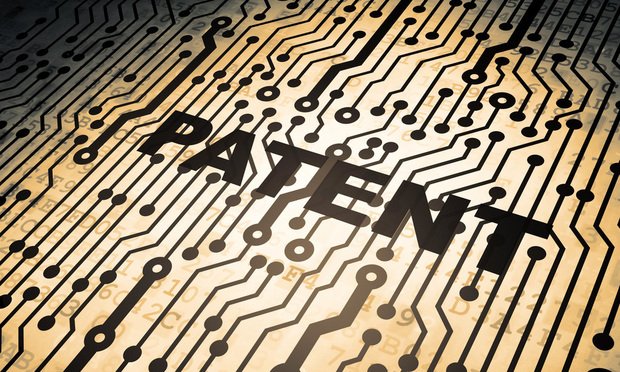Features

Use a WISP As a Roadmap to Detail Data Security Processes and Controls
The written information security plan (WISP) is not just another compliance document, it's a practical roadmap that turns abstract data protection duties into concrete business practices.
Features

From Reactive to Proactive: Navigating AI, Privacy and Security Compliance Across APAC’s Expanding Regulatory Landscape - Part Two
APAC is awash with recent changes in AI, privacy and cybersecurity regulations. Part one of this article examined the specifics of those changes and the paradigm shift they are precipitating. Part two explores the real-world implications of those changes and key takeaways for compliance teams.
Features

The Investigative Complexities of the TAKE IT DOWN Act
The increasing prevalence of cyberstalking, harmful deepfakes and online harassment is creating profound risks for individuals and organizations. So much so that Congress has implemented a federal statute designed to shift liability toward online platforms and provide victims with enforceable removal rights.
Features

Five Operational Foundations To Determine Whether Your Tech Investments Will Succeed In 2026
Law firms are spending record amounts on technology right now. The difference between technology investments that succeed and those that fail may have less to do with the tools themselves than the operational foundation beneath them.
Features

Use a WISP to Detail Data Security Processes and Controls
The written information security plan (WISP) is not just another compliance document, it's a practical roadmap that turns abstract data protection duties into concrete business practices.
Features

AWS Outage Demonstrates Risks of Cloud Services
The recent Amazon Web Services outage, which incapacitated online services across the country, highlights risks companies must manage as they increasingly depend on cloud services, lawyers say.
Features

Trends In Patent Policy and Enforcement: What Cybersecurity Companies Need to Know
Forward-thinking cybersecurity companies should recognize that the patent world is at a moment of change. A tremendous amount of thought, financial investment, and political capital is being devoted to transforming patents into assets that are central to the economy, international trade, and national defense. The incentives for obtaining and aggressively monetizing patents are increasing. Companies that take steps now to navigate these changes may be rewarded with significant competitive advantages.
Features

Pioneering AI In Law Firm Cybersecurity: Balancing Innovation With Risk of Using GANs and Other Novel Solutions
The cybersecurity arms race shows no signs of slowing. Attackers continue developing more sophisticated techniques, forcing defenders to evolve accordingly. Generative adversarial networks (GANs) represent one of the most promising developments in the defensive arsenal, but only when deployed wisely. Organizations should evaluate their risk appetite and technical capabilities carefully.
Features

Anatomy of a Prompt: Real Training for Using AI
With generative AI, research time has collapsed and review time has expanded. The model can draft in minutes, which means you now spend more time asking whether the draft is accurate, defensible, and on brand. Prompting skill is not about magic words. It is about shaping the first draft so the review phase is shorter and you are not fixing preventable mistakes. A good prompt removes ambiguity, narrows scope, and sets expectations. The better the prompt, the less the scramble at the end.
Features

Top 7 Ways Law Firms Can Fortify Their Security and Protect Client Trust
In the minds of your clients, trust and security are intertwined. As stewards of confidential client information, law firms must go beyond minimum compliance, setting a gold standard that safeguards data, builds confidence and differentiates forward-looking practices from the rest. The following seven strategies, drawn from real-world experience in legal technology, outline actionable ways law firms can fortify their defenses while making security a pillar of client trust and firm reputation.
Need Help?
- Prefer an IP authenticated environment? Request a transition or call 800-756-8993.
- Need other assistance? email Customer Service or call 1-877-256-2472.
MOST POPULAR STORIES
- The DOJ's New Parameters for Evaluating Corporate Compliance ProgramsThe parameters set forth in the DOJ's memorandum have implications not only for the government's evaluation of compliance programs in the context of criminal charging decisions, but also for how defense counsel structure their conference-room advocacy seeking declinations or lesser sanctions in both criminal and civil investigations.Read More ›
- Bankruptcy Sales: Finding a Diamond In the RoughThere is no efficient market for the sale of bankruptcy assets. Inefficient markets yield a transactional drag, potentially dampening the ability of debtors and trustees to maximize value for creditors. This article identifies ways in which investors may more easily discover bankruptcy asset sales.Read More ›
- Use of Deferred Prosecution Agreements In White Collar InvestigationsThis article discusses the practical and policy reasons for the use of DPAs and NPAs in white-collar criminal investigations, and considers the NDAA's new reporting provision and its relationship with other efforts to enhance transparency in DOJ decision-making.Read More ›
- Supreme Court Asked to Assess Per Se Rule Tension in Criminal AntitrustIn recent years, practitioners have observed a tension between criminal enforcement of the broadly written terms of the Sherman Antitrust Act of 1890 and the modern Supreme Court's notions of statutory interpretation and due process in the criminal law context. A certiorari petition filed in late August in Sanchez et al. v. United States, asks the Supreme Court to address this tension, as embodied in the judge-made per se rule.Read More ›
- The DOJ's Corporate Enforcement Policy: One Year LaterThe DOJ's Criminal Division issued three declinations since the issuance of the revised CEP a year ago. Review of these cases gives insight into DOJ's implementation of the new policy in practice.Read More ›
